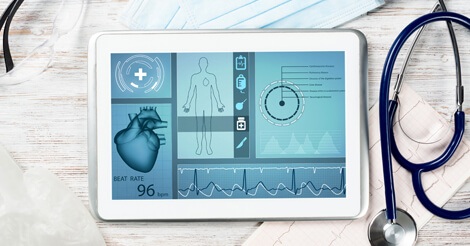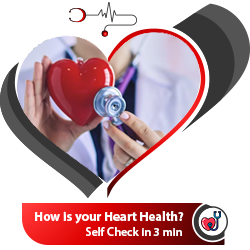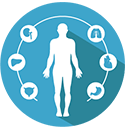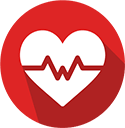Screening Tests in Details
Sonomammography, audiometry, transvaginal sonography - Does these test names sound like an alien’s code language? Well, we agree that they might as these are hardcore medical terminologies used for various tests.
For you, we have simplified the tests and consultations that you will come across in our health packages in a non-medico’s language and placed them under various categories.
Read on!

Physical Assessment & Consultation
-
General Medical Checkup
A detailed consultation with the doctor, where medical and family medical history of the customer is taken and his height and weight are noted.
-
Gynaecology Consultation
A thorough consultation and one on one for female customers covering their contraception, conception, pregnancy and various gynaecological queries and issues.
-
Diet Consultation
A comprehensive discussion with a Dietician, who will guide you in terms of nutrition, balanced diet and healthy eating habits and may suggest changes in the diet and lifestyle, if required. This consultation will give you an in-depth understanding of how to eat and stay healthy.
-
Fitness Consultation
A fitness expert advises you on the appropriate fitness program to follow, keeping in consideration your age, weight, medical history etc.
-
Expert Counselling by Doctor
A final assessment of all your test reports by an experienced physician. He will give you a detailed analysis of your test reports and suggest corrective measures, if needed. It is always advisable do a follow-up with your family doctor regarding any measures that are suggested.
Laboratory Work
Blood and urine tests detect any disturbances in the chemical levels of your body. There are several tests done, each for a specific purpose.
-
Haemogram
A test to assess vital parameters of blood like haemoglobin, WBC, RBC, platelets, hematrocrit etc. Crucial for donating or receiving blood, espeically in case of emergencies.
-
Urine test (Routine & Micro)
For detecting infections or any other irregularities in the kidneys and urinary system.
-
Blood Sugar
For detecting level of sugar in blood to screen for diabetes.
-
Blood Urea & Serum Creatinine
to assess the performance of the kidneys.
-
SGPT, SGOT, Serum Bilirubin
For assessing the performance of the liver.
-
Lipid Profile
For analysis of cholesterol (fat) levels in the blood as they are indicative of heart health.
-
Thyroid Stimulating Hormone (Thyroid Function Test)
To check the levels of this hormone as it plays a key role in the normal functioning of the brain, nervous system and formation of blood.
-
Australia Antigen
To detect the presence of Hepatitis B virus.
To check the levels of this hormone as it plays a key role in the normal functioning of the brain, nervous system and formation of blood.
How it is done?You will be made to sit on a chair with your arm on the hand rest. The technician will insert the needle in a particular vein of your arm and will a small quantity of blood, which will then be sent to a laboratory.
For urine, you will be asked to collect the sample of urine in the given container.
-
Chest X-Ray
A simple and quick test that takes a picture of the lungs and heart to check for various diseases.
How it is done?The technician will position you correctly on the x-ray table and he may ask you to hold your breath for few seconds. Pregnant women or those suspecting a pregnancy should not undertake this test due to radiation exposure.
-
Electro Cardiogram (ECG)
An ECG maps the electrical activity and muscular functioning of the heart and is crucial in indicating it’s abnormal conditions.
How it is done?You will be asked to lie down on a table. Electrodes (small clip-like objects) will be attached to your arms, legs and chest and a gel is applied. A reading of the ECG will be taken from a monitor attached to the electrodes. You have to lie very still and breathe normally. Do not talk during the test.
-
2D Echo Cardiography (Colour Doppler of Heart)
It is a type of ultrasound which provides detailed analysis of the heart focusing on valves, heart chambers, cardiac capacity, congenital defects, etc.
How it is done?A gel is applied to the. You will be asked to lay on your left side as the technician moves the transducer across the different parts of your chest to get detailed views of the heart.
-
Ultrasonography of abdomen & pelvis
This ultrasound helps to determine abnormalities in the abdominal organs like stones and inflammation of the liver, gall bladder, spleen, pancreas and kidneys.
How it is done?A gel will be applied on the whole abdominal area and the transducer is moved over it. An image of the structures will appear on the attached monitor. You will be required to have your urinary bladder full by drinking lots of water and not urinating for couple of hours.
Gynaecological Tests
-
Sono-mammography
A type of ultrasound to detect and diagnose any lumps or calcifications in the breasts to screen out cancerous probabilities.
How it is done?A gel will be applied over the breast area as it is moves swift over the breast. An image of the breast tissue can be seen on the moniter.
-
Pap smear
Vital in detection of cervical cancer (which is completely curable if detected at an early stage) in its very initial stages. Cervical cancer is one f the commonest cancer among Indian woman.
How it is done?You will need to lie down on your back. A speculum is inserted into the vaginal opening and cervical brush is inserted into the openings of the cervix and twirled around to collect a sample of the cells. Women should ideally have Pap smear test in the mid of their cycle and not close to having or during the periods.
-
Transvaginal Ultrasound (TVS)
It is done to obtain complete evaluation of the pelvic area in females more appropriately and closely.
How it is done?You will need to lie down on your back with your feet held in a stirrup. A transducer is inserted into the vagina. A protective cover is placed over the transducer and it is lubricated with a small amount of gel to avoid any discomfort.
CT Based Tests
-
CT Coronary Angiography (Heart)
This is a non invasive test that takes pictures of the heart and precisely detects any blockages in the blood vessels of heart.
-
CT Screening of Neck Vessels (Carotid artery)
This evaluates the blood vessels in the neck which takes blood from heart to the brain. Any narrowing of this vessel, if detected early can be treated to prevent further complications.
-
CT Screening of Intracranial Vessels (Brain)
This detects narrowing, blockages and any abnormal growths in vessels of the brain. This test is crucial in diagnosing and preventing fatal conditions like brain haemorrhage and stroke.
-
CT Brain (Contrast)
This test gives us information about any pathology in the brain tissues like tumours, haemorrhage etc.
-
CT Calcium Scoring
A non-invasive procedure done to assess the presence, location, and extent of calcified plaque in the coronary arteries due to a buildup of fat or other substances.
-
How are these done?
For all the above CT tests, the course of action remains the same. You will be asked to lie down on your back on a CT scanning table. A contrast medium (dye) is injected (except in CT calcium scoring) in your vein. Your heart rate will be continuously monitored during the procedure with the help of ECG leads. You are asked to hold breath for 15-20 seconds during the scan so that the images are captured without blur.
You should not eat or drink anything except water for at least 2 hours prior to the test. This test will not be done in case of pregnancy or even if it is suspected.
-
CT Scanogram/X-Ray of Lumbar Spine and Cervical Spine
This evaluates the state of your lumbar and cervical spine. This test is crucial in diagnosis and treatment of chronic lower back pain.
Also Read: Heart Attack Prevention & Precaution Tips
Other Assessment Tests
-
Pulmonary Lung Function:
It is a breathing exercise that checks lung condition and lung capacity, which may get altered in some lung and heart conditions.
How it is done?You will need to wear loose-fitting clothes that do not restrict the breathing. If you wear dentures, they need to be removed. A mouthpiece will be inserted in your mouth, and you will be asked to breathe in, breathe out, or hold your breath several times.
-
Screening Audiometry Test:
Loss of hearing is a gradual process and sometimes goes unnoticed to the patient. Early detection of this defect through an audiometry test can help you in taking early corrective measures.
How it is done?You will be taken in a soundproof room and asked to wear special headphones. The technician will instruct you to raise your hand every time you hear a tone in the headphones. A head band that fits behind your ear will be placed. The tones will be repeated in various volume levels and sounds.
-
Stress Test or Treadmill Test:
this test is done to determine the amount of stress that your heart can take before it develops either an abnormal rhythm or evidence of not enough blood flow to the heart muscles or ischemia.
How it is done?You will be connected to an ECG machine with electrodes and asked to walk on the treadmill, a machine you must have seen in gyms and fitness centres. The speed and elevation of the treadmill is increased gradually. In case of any discomfort during the test, inform the technician immediately.
-
Ophthalmology:
A routine eye checkup to evaluate vision and condition of the eyes.
How it is done?You will be made to sit on a special chair and asked to read some text written on a card or board kept a little away from you. Sometimes eye drops may be put in your eyes for a detailed examination by other instruments.
-
Bone Mineral Densitometry (BMD):
It helps in assessing loss and porosity of the bones, which can lead to osteoporosis, a common reason for fragile bones that fractures easily.
How it is done?In the x-ray room, you will need to lie down on your back on a table and the machine will scan your bones of hip and lower spine.
-
Total body fat percentage:
This gives the percentage of fat present in your body in proportion with muscles. It is helpful in determining one’s obesity level.
Also Read: Heart Disease Causes & Risk Factors
Related Health Checkup Packages
-
DNAwise Genetic Total Package
4 Tests (80 Parameters)
Offer Price 26,223 -
Essential Checkup Package for Father
15 Tests (70 Parameters)
Offer Price 14,443 -
Complete Checkup Package for Mother
15 Tests (70 Parameters)
Offer Price 14,443 -
Full Body Checkup Package
21 Tests (77 Parameters)
Offer Price 26,666 -
Preventive Full Body Lab Checkup Package
12 Tests (65 Parameters)
Offer Price 11,110












